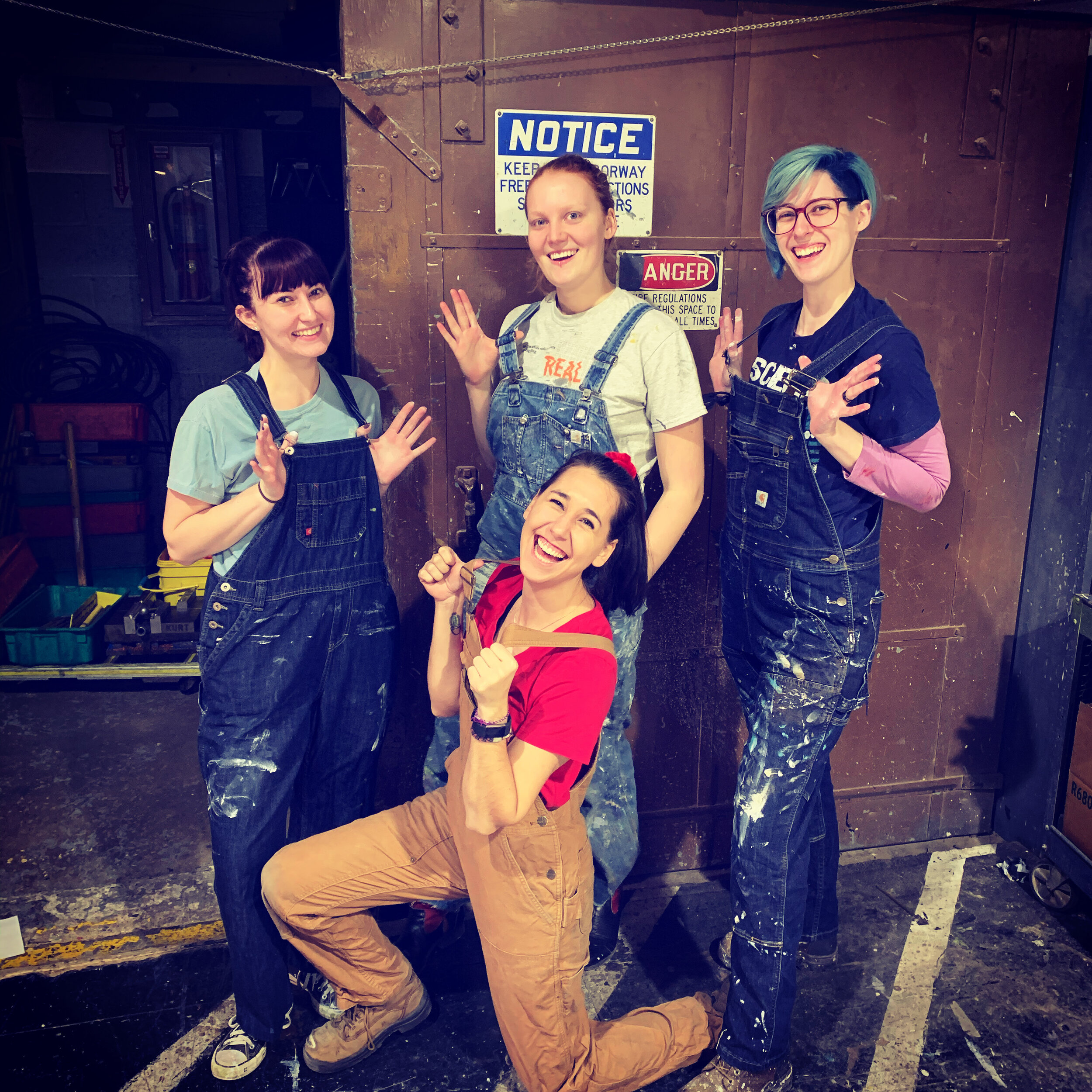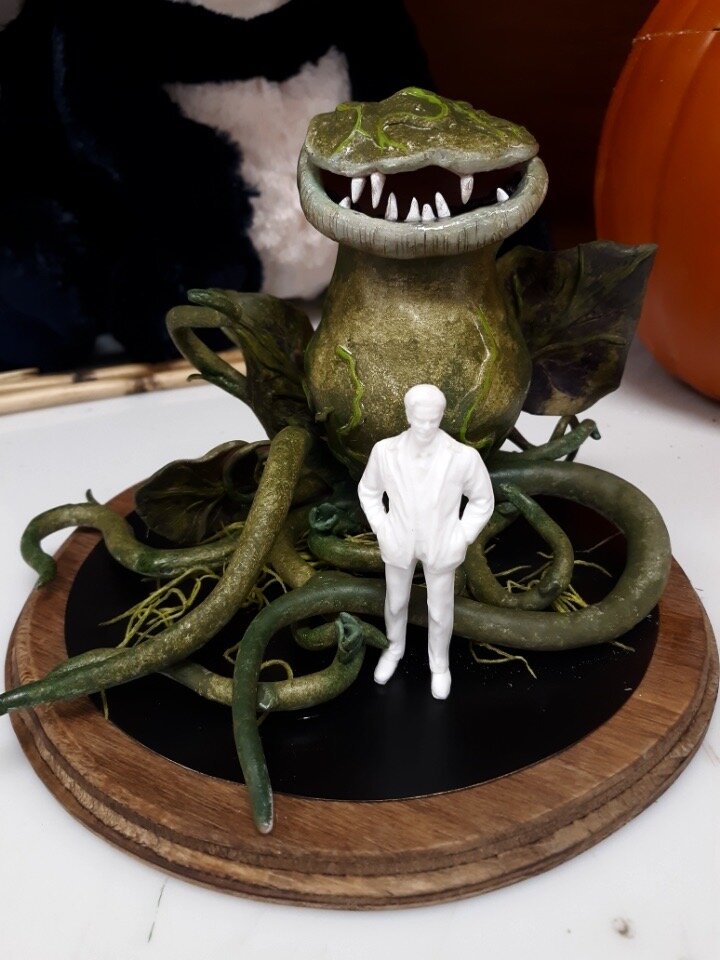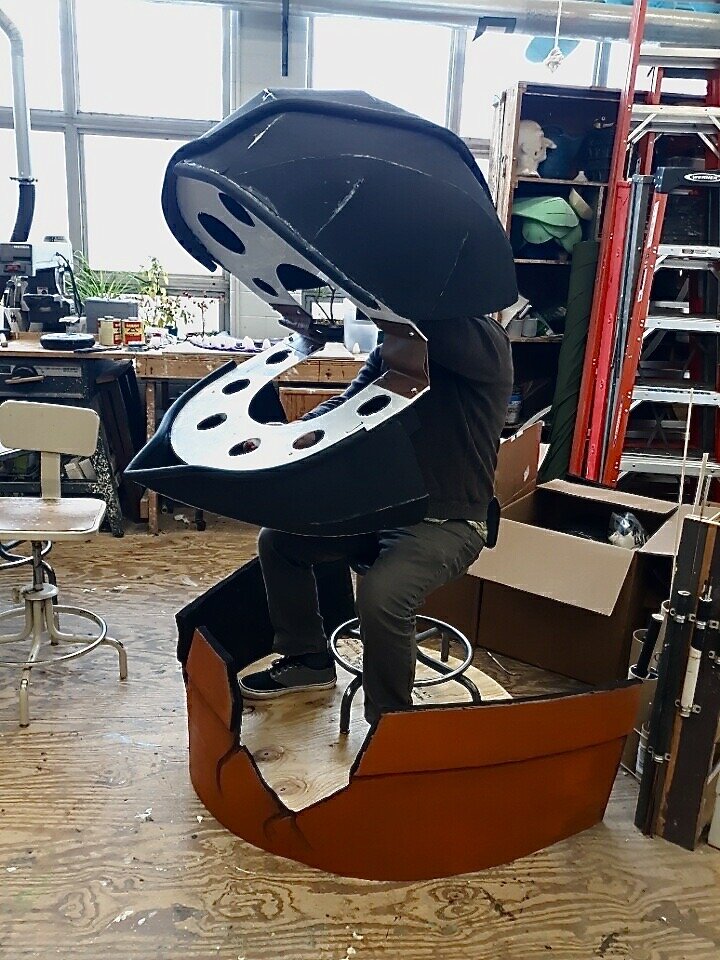PLEASE BE AWARE: At 18:27 (Kimberly is talking about how she’s sad we weren’t going to get the chance to get through tech) there is a wild and startling sound glitch that lasts 6 seconds. It’s the only time the glitch occurs and the flow of the interview was so good that I didn’t want to try another take. So I beg your forgiveness and beg that you treat it as you would an exciting moment in live theatre where perhaps an unexpected event only served to make a live experience unique.
And this week on Squad Pod we have a most remarkable and wonderful Team Technical Direction!
I cannot really emphasize how much respect I have for these people. Technical Directors are the part of the production team that takes my designer dream castles and begins to put the real-life foundations in them. Production teams are tasked with making the esoteric into a physical reality. At UConn, the technical directors for the shows are often grad students. The technical director for Little Shop, Kimberly, has multiple other credits as technical director at CRT including Good Children and Shakespeare in Love.
Kimberly and I first worked together on Henry IV. She was one of the assistant technical directors on that production. We got a tiny taste of how good our work flow might prove on that production. Turns out, as Little Shop showed us, we make a really killer team as designer and TD. Kimberly is an incredible communicator, attentive to detail, and a rock solid ally throughout the process. I look forward to the day when we get to see a show all the way through together.
The TD rockstar herself
Did I mention that she and I (along with other shop friends including other Little Shop squad-star Ray) have a thing for overalls?
The second interview is with Kimberly’s most fantastic Assistant Technical Director, Gavin. Gavin is recently graduated with his BFA from UConn (Congrats Grad!!!), and he certainly spent a good deal of time in the scene shop at the university. He also worked as a student manager for the UConn men’s ice hockey team. I mean, this is the kind of person who makes me feel like I should be out saving the world or something because he definitely did a lot within the department and outside. He is at once gracious and fierce, and I can’t wait to run into him again as well. He and Kimberly worked beautifully as a team, could not have been in better hands on this show.
The Dash in the flesh! (I gave him that code name because he always seemed to be dashing away the second Kimberly needed something, only to return so fast I started to question if he had even left….)
I love this picture. A shot of Gavin and our TD grads (Left to Right: Joey, Aubrey, (Gavin), and Kimberly). This was taken on the set of Shakespeare in Love, on which Kimberly was the TD.
Only piece that got fully built before the hard stop was the City Skyline. Here’s the framing
Here it is faced (and with faces ;)
And we got a little bit of paint on it before we had to leave campus
The paint elevation for the City Skyline (i.e. what she was supposed to look like when all was built and painted)
A model photo from the scene by scenic I built for my MFA Project Book. This would have been a moment where the City Skyline piece would have been the most visible during the performance as we traveled from the shop to the dentist office.
Disclaimers, Clarifications, Comments: Again, apologies for the sound glitch in Kimberly’s interview. These audio pieces are recorded in one take via Zoom with no editing so they are about what you’d expect in terms of overall sound quality/capabilities. Remember that these are also informal chats among colleagues where we are sharing opinions based on our own perceptions of our experiences; these perceptions are not to be misconstrued as the “only right” way to view the situation or work.



























































